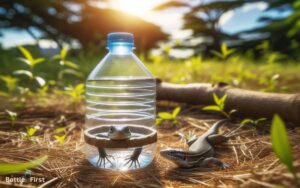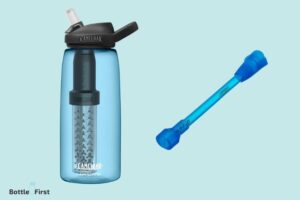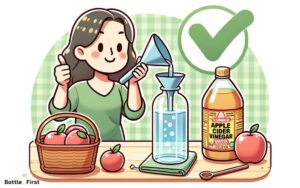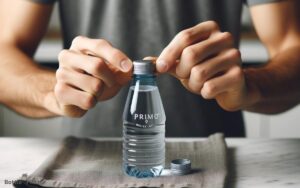Do You Have to Wash a New Water Bottle? Yes!
Yes, it is essential to wash a new water bottle before its first use. Washing removes any contaminants or residues left from the manufacturing process, ensuring that the bottle is safe for drinking.
When water bottles are manufactured, they can be exposed to various substances and conditions that may leave behind dirt, bacteria, or chemicals.
These contaminants could potentially be harmful if ingested. For example, a water bottle sitting in a warehouse or on a store shelf can gather dust and bacteria.
To clean a new water bottle, you should:
- Rinse it thoroughly with hot, soapy water.
- Use a bottle brush to scrub the inside and reach all the corners.
- Rinse again with plenty of clean water to remove any soap residue.
- Dry the bottle completely before use.
Ensuring that your new water bottle is impeccably clean not only promotes health but also enhances the taste and quality of the water you drink.
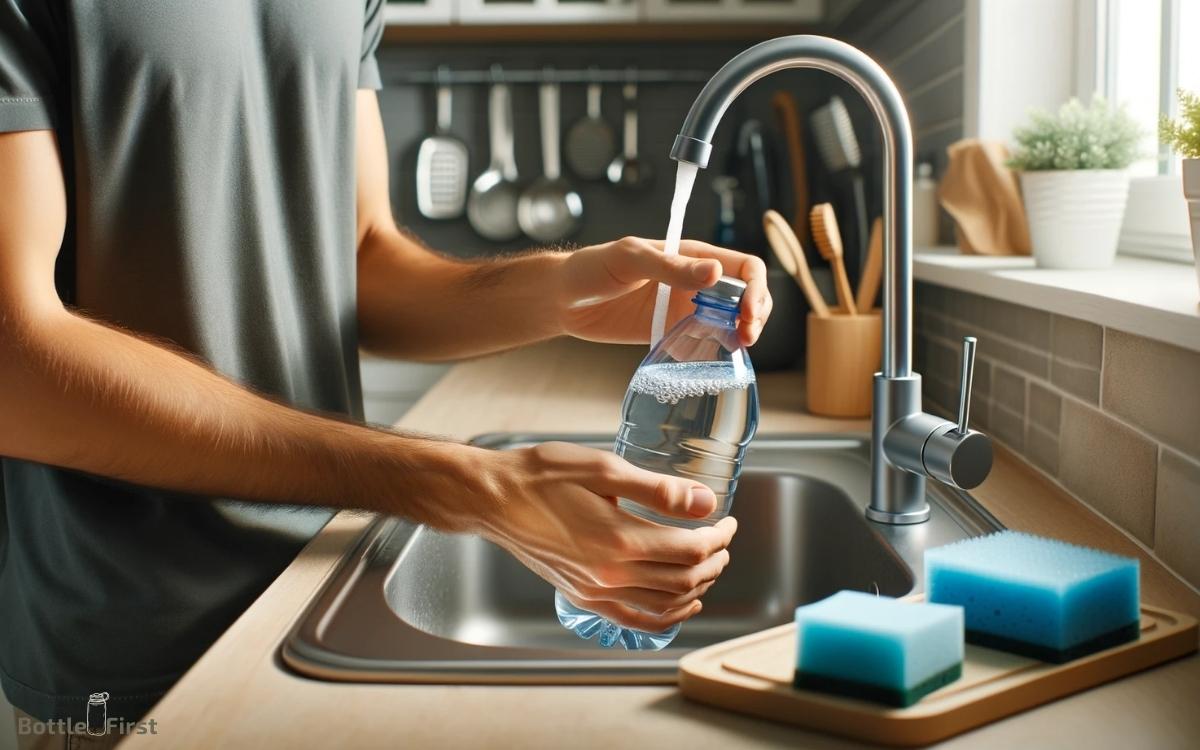
Key Takeaway
Importance of Washing New Water Bottles
Washing new water bottles before use is crucial to ensure that any potential contaminants from the manufacturing and packaging processes are removed. It also helps to eliminate any residual odors or tastes that may affect the quality of the water.
Additionally, washing the bottles helps to remove dust, debris, and any potential germs that may have accumulated during storage or transportation.
Potential Contaminants in New Water Bottles
Before using a new water bottle, it is important to be aware of the potential contaminants that may be present in the manufacturing and packaging processes.
These contaminants can include various substances that may have come into contact with the bottle during its production and transportation.
It is crucial to understand these potential contaminants to ensure the safety and purity of the water that will be stored and consumed from the bottle.
| Potential Contaminants | Description |
|---|---|
| BPA | A chemical used in polycarbonate plastics that can leach into the water and may have adverse health effects. |
| Microorganisms | Bacteria or fungi that can contaminate the bottle during the manufacturing and packaging process, posing health risks. |
| Residual Chemicals | Cleaning agents or substances used in the manufacturing process that may remain in the bottle and contaminate the water. |
Being mindful of these potential contaminants underscores the importance of properly washing new water bottles before their initial use, ensuring the safety and purity of the water stored within.
How to Properly Clean a New Water Bottle
Properly cleaning a new water bottle is essential for removing potential contaminants and ensuring the purity of the water stored within.
To begin, disassemble the bottle, including the lid and any additional components, and wash each part with dish soap and warm water. For hard-to-reach areas, a bottle brush can be used to scrub the interior thoroughly.
Next, rinse the bottle and components with clean water to remove any soap residue. For an added layer of cleanliness, consider sanitizing the bottle by using a diluted bleach solution or a specialized bottle-cleaning tablet.
Once cleaned, ensure all parts are completely dry before reassembling the bottle.
Following these steps will help maintain a sanitary water bottle, safeguarding the quality of the water it contains. For tips on maintaining a clean water bottle, continue reading below.
Tips for Maintaining a Clean Water Bottle
To maintain a clean water bottle, regularly clean and sanitize it every few days to prevent bacterial growth and ensure the purity of the water.
Additionally, consider the following tips for maintaining a clean water bottle:
- Use a bottle brush for thorough cleaning.
- Opt for stainless steel or glass bottles to prevent the retention of odors and stains.
- Always air-dry the bottle upside down to prevent moisture buildup.
- Avoid using harsh chemicals and opt for natural cleaning solutions.
- Inspect the bottle for any signs of wear and tear and replace if necessary.
Benefits of Regularly Washing Water Bottles
Regularly washing water bottles is essential to maintaining their cleanliness and ensuring the purity of the water they contain, thereby preventing bacterial growth and potential health risks.
Benefits of regularly washing water bottles include:
- Preventing the accumulation of bacteria and germs.
- Eliminating residual odors and flavors, ensuring a fresh taste with each use.
- Extending the lifespan of the water bottle, preventing degradation and deterioration.
- Promoting environmental sustainability by reducing the need for single-use plastic bottles.
Regular cleaning not only ensures a hygienic drinking experience but also contributes to the longevity of the water bottle and supports sustainable practices.
Conclusion
In conclusion, maintaining the cleanliness of new water bottles is essential for ensuring the safety of the water consumed.
By regularly washing and properly cleaning water bottles, individuals can prevent potential contamination and maintain their health.
Just as we cleanse our bodies to rid ourselves of impurities, so too must we cleanse our water bottles to ensure the purity of the water we drink.

